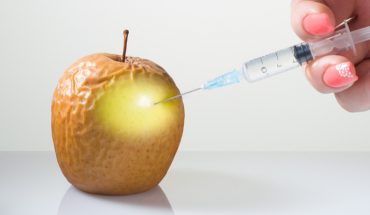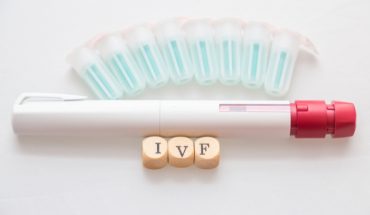What’s in a smile? ‘Smiling uses between 12 and 26 different muscles in the face which pull the skin into a variety of furrow and folds,’ says Dr Nisith Sheth, a consultant dermatologist based in Harley Street and a spokesman for the British Skin Foundation. ‘Many studies have tried to establish exactly which muscles are involved in smiling, but what they have found is that everyone is different, which is why smiles are so individual.’
‘Although this effect is temporary when skin is young and elastic, over time these folds can stay permanently as wrinkles as the skin loses its elasticity. The loss of elasticity makes the lines appear more prominent when you smile.’
True smiling, as opposed to social smiling, is triggered by nerve impulses from the cerebral cortex and the brain stem, causes muscles to lift and contract all over the face.
True smiling, as opposed to social smiling, is triggered by nerve impulses from the cerebral cortex and the brain stem, causes muscles to lift and contract all over the face.
In contrast, the social smile only activates the zygomaticus major muscles, which causes the mouth to pull up at each sides but never reaches the eyes.
Frowning, which uses around 43 separate muscles, has an even more marked effect on lines and wrinkles in the skin, so it’s better to smile than pull a sulky face. Looking mildly surprised, with eyes held open wide, is the ‘smoothest’ expression, which is why this look predominates in celebrity selfies.
Fortunately, there are ways to counter the wrinkling effects of smiling a lot. Some people are luckier than others. ‘People with darker skin are less likely to suffer premature wrinkles due to smiling because melanin is protective against damaging UV rays,’ explains Dr Sheth. ‘Dry skin is more likely to have noticeable fine wrinkles than naturally oily skin. Smoking and a high-sugar diet are also linked to premature skin ageing.’
Danielle Collins, a face yoga expert who has developed a 20 minute daily workout to help people retain a youthful visage, says it can help to be ‘face aware’. : ‘I always encourage clients to have an awareness of their faces and try to not frown, squint or crinkle the forehead when expressing, therefore reducing the likelihood of lines between the eyebrows, on the forehead and under the mouth . However, even though smiling can cause lines, it is so essential for our inner happiness. Feeling good on the inside radiates on the outside, so in my opinion helps you look better anyway, I would never say not to smile.’
Sammy Margo, a physiotherapist based in London who has treated people with a range of conditions affecting muscles in the face including Bell’s palsy, also advocates daily facial exercises to keep skin looking smooth and supple. ‘One of the key exercises to improve muscle tone in the oral zone is simply to pout and then relax and repeat 10 times,’ she says. ‘This works the muscles around the mouth, creating uplift and smoothing out skin.’ When we think about the musculature of the face, we divide the face into three separate zones. The orbital zone includes all the muscles around the eyes. The nasal zone involves the muscles around the nose and cheeks. The oral zone includes the lips, chin and neck. All three zones need to be considered when we want to restore and enhance a smooth, youthful complexion.’
The forehead
When we smile a true, emotional smile, muscles all over our face contract. One of these is the occipito frontalis, which is a double sheet of muscle that runs vertically down the forehead. ‘Smiling causes this muscle to contract and lift, pulling the skin above into horizontal creases,’ explains Sammy Margo. Botox injections are often used to paralyse the occipto frontalis muscle so it cannot lift and cause wrinkles to show on the skin, leaving the forehead smooth.
Kim Roberts, senior facial therapist based at Champney’s Henlow Grange, says that facial massage can improve the look of facial wrinkles by improving circulation without the need to resort to Botox injections or fillers. ‘An energetic massage can help improve the circulation in the lower levels of the skin, promoting the production of new collagen and elastin and speeding the removal of old, dead skin.’ Keeping skin hydrated is also very important. ‘Make sure you drink plenty of water throughout the day and always wear a moisturising night cream. When you sleep, you perspire and lose lots of water through the skin and night cream helps to lock the moisture in.’
The eyes
Crinkly eyes are a sign of a true smile, known as the duchenne smile after the scientist who first distinguished ‘mouth corner’ smiles from ‘eye socket’ true smiles. ‘The levator palpebrae superioris causes the eyelid to squeeze tighter shut while the orbicularis oculi muscle that sweeps round the lower half of the eye and upwards contracts to cause the characteristic ‘crow’s feet’ says Sammy Margo. Botox is commonly used to paralyse the orbicularis oculi muscle at the outside corner of the eye so it cannot contract and cause crow’s feet to appear.
The cheeks
A broad smile will cause the cheeks to rise up and contract, causing vertical lines at the side of the face. This is achieved by the risorius muscle working together with the zygomaticus minor muscle,’ says Dr Sheth. ‘As we age, we lose fat in the cheeks and collagen breaks down. Cheek wrinkles can be very hard to treat. Dehydration can make wrinkles appear to be deeper. ‘You have to rebuild volume loss to iron out wrinkles in the cheecks. Some people opt for fillers or fat injections in this area, using their own fat taken from another part of the body.’
The chin
The chin muscles lift and tighten when we smile, but the skin gradually forms into fine vertical lines due to constant stretching and relaxing. Fillers are often used to smooth the appearance of a wrinkly chin. ‘A small amount of botox injected into the mentalis muscle, which can appear scrunchy when you smile, can leave this area looking smooth,’ says Dr Sheth. ‘Otherwise, laser treatments can stimulate the production of collagen and plump out the fine lines.’
The neck
When we smile either a social or true smile, the muscle that bands the neck lifts and tightens, temporarily stretching and smoothing the skin of the neck too. But constantly lifting and stretching thin skin across the neck does eventually lead to saggy folds and wrinkles. A surgical procedure known as a neck lift involves removing some of the baggy skin and pulling the remaining skin more tightly across the neck, but there are many non-surgical ways to improve the appearance of the neck and jaw line. ‘If we inject Botox into the platysma muscle, this can reduce the stretched appearance of the skin of the neck,’ says Dr Sheth. ‘The so-called ‘Nefertiti lift’ involves injecting along the jaw line which makes the jaw line and neck more defined.’
The mouth and lips
If the mouth corner muscle, the orbicularis oris, activates alone, then this signifies social smiling, which is not caused by happiness and joy alone. The muscle causes a crease to form at the corner of the mouth. Alternatively, it is the depressor anguli oris which pushes the mouth downward into a frown. ‘Injecting Botox near the jaw line can iron out this downturned mouth, if the depressor anguli oris is too active’ explains Dr Sheth. Fine lines gradually form around the mouth as we age and deeper horizontal lines run down the side of the mouth towards the chin, known as marionette folds. ‘Laugh lines and wrinkles around the lips can be very ageing but there are many things to improve their appearance,’ says facial therapist Kim Roberts. ‘Skin products containing retinol can stimulate the production of collagen in the dermal layer which makes the skin around the lips look fuller.’
The nose
The area around the nose is actually very active during a smile. When you smile, the nasolabial fold becomes prominent. These folds appear every time you smile and gradually become more pronounced. There is also a muscle that runs as a band across the bridge of the nose called the compressor naris. In some people, this muscle crinkles a lot during a true smile but the effect is largely absent in others. ‘The nose tip can also begin to fall slightly as we age and this effect is more prounced in people who smile a lot,’ says Dr Sheth. ‘Botox in the tip of the nose can reverse the downward droop, but it can be quite painful.’
- Biden Declines Second Term: Health Concerns - 23rd July 2024
- New catheter coating stops bacteria cells from swarming - 10th June 2024
- AI-designed catheters could dramatically reduce urinary tract infections - 10th June 2024







